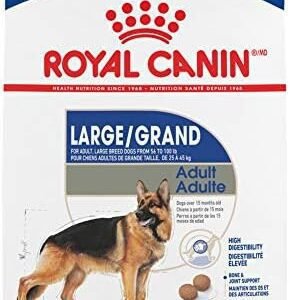I. Introduction
In the realm of canine healthcare, the use of medications like Codeine plays a vital role in alleviating pain, managing health conditions, and improving the quality of life for our four-legged companions. This article is dedicated to providing a comprehensive guide on Codeine for dogs, covering its benefits, appropriate dosage, potential side effects, and more.

The Significance of Codeine in Canine Healthcare
Codeine, known by its common name, is a medication that falls under the category of opioids. It has been a valuable tool in the veterinarian’s arsenal for addressing various health issues in dogs. While Codeine is primarily recognized for its role in managing pain, it also serves to suppress coughs and control diarrhea, offering a multi-faceted approach to enhancing canine well-being.
Essential Drug Information at a Glance
Understanding a medication is a crucial part of responsible pet ownership. To provide a clear overview of Codeine, here’s a table summarizing essential drug information for veterinary use:
| Common Names | Codeine |
|---|---|
| Drug Type | Opioid |
| Used For | Pain Management, Cough Suppression, Diarrhea Control |
| Administered | Tablets, Oral Liquid, Injectable, etc. |
| FDA Approved | Yes |
This table serves as a quick reference for veterinarians and pet owners seeking information about Codeine, allowing for organized and easily accessible details regarding its application in canine healthcare.
Table of Contents
The Importance of Consulting a Veterinarian
Before embarking on any medication regimen for your beloved dog, it is of utmost importance to consult a qualified veterinarian. Veterinarians are not only well-versed in the appropriate usage of medications like Codeine but are also equipped to make informed decisions based on your dog’s specific health needs. The expertise of a veterinarian ensures that the medication is not only effective but also safe for your pet.
The Purpose of This Article
The primary objective of this article is to provide accurate and detailed information about Codeine for dog owners. It serves as a valuable resource for those looking to understand the benefits of Codeine, the correct dosage for their dog, potential side effects, and other essential considerations. By the end of this guide, pet owners will be well-informed about Codeine, enabling them to make informed decisions regarding their dog’s health and well-being.
With this introductory overview, we set the stage for a comprehensive exploration of Codeine for dogs, delving into the details and considerations that every responsible dog owner should be aware of.
II. Understanding Codeine
In this section, we will delve into a detailed understanding of Codeine, exploring what this medication is, how it works in the bodies of dogs, and the common conditions and ailments in dogs that Codeine can effectively treat and manage.
What is Codeine?
Codeine is an opioid medication that is commonly used in both human and veterinary medicine. It belongs to a class of drugs known for their pain-relieving properties. While Codeine is originally derived from the opium poppy, it has been synthesized to create a more controlled and regulated form.
In the context of veterinary medicine, Codeine is considered a valuable tool for pain management and the treatment of certain medical conditions in dogs. It has a moderate level of potency, which makes it a suitable choice for a range of situations where pain relief is required.
How Does Codeine Work in Dogs’ Bodies?
Codeine exerts its effects by interacting with the central nervous system. Once administered, it is metabolized in the liver and converted into its active form, morphine. Morphine is the primary agent responsible for the pain-relieving properties of Codeine.
In simple terms, Codeine alters the way the brain perceives and responds to pain signals, effectively reducing the sensation of pain. This mechanism of action makes it a valuable medication for addressing pain associated with various health conditions in dogs.
Common Conditions and Ailments in Dogs that Codeine Can Treat or Manage
Codeine is employed in veterinary medicine to manage a range of conditions and ailments in dogs, including:
Pain Management: Codeine is particularly useful for addressing pain in dogs. This includes pain resulting from surgical procedures, injuries, and chronic conditions such as arthritis.
Cough Suppression: Codeine’s properties extend to cough suppression. It is employed to alleviate coughing in dogs that may be due to respiratory infections or other causes.
Diarrhea Control: In cases of severe diarrhea in dogs, Codeine can be used to slow down the digestive system, allowing for better control and management of this condition.
Understanding the versatility of Codeine in treating these common conditions is essential for both veterinarians and dog owners. It serves as a valuable resource in enhancing the overall well-being and comfort of dogs.
As we continue our exploration of Codeine for dogs, the next section will delve into the specific benefits of this medication in enhancing the quality of life for our canine companions. We will explore the conditions where Codeine can make a significant difference and improve the well-being of dogs in need.
III. Benefits of Codeine for Dogs
In this section, we will explore the numerous benefits of Codeine for dogs. This medication is highly effective in treating specific canine health issues, and its use can significantly enhance the quality of life for our four-legged companions.
Effectiveness in Treating Specific Canine Health Issues
Codeine’s effectiveness in treating specific canine health issues is a testament to its versatility in veterinary medicine. Here are some key conditions and health issues where Codeine has proven to be highly effective:
Pain Management: Codeine is a reliable choice for managing pain in dogs, whether it’s due to post-operative discomfort, injuries, or chronic conditions like osteoarthritis. It offers a significant improvement in the dog’s comfort and quality of life.
Cough Suppression: Codeine’s ability to suppress coughs is invaluable when dealing with respiratory conditions that cause persistent coughing. It helps dogs breathe more comfortably and reduces the distress associated with constant coughing.
Diarrhea Control: Severe diarrhea can be both uncomfortable and potentially dangerous for dogs. Codeine slows down the digestive process, providing relief to dogs and allowing for better control and management of this condition.
- Chronic Health Issues: Dogs with chronic health issues that result in ongoing pain and discomfort, such as cancer or orthopedic conditions, can benefit from Codeine’s pain-relieving properties. It enhances their quality of life by minimizing discomfort.
How Codeine Can Improve Dogs’ Quality of Life
Codeine has a profound impact on the quality of life for dogs in need. It provides several significant advantages that contribute to the well-being and comfort of our canine companions:
Pain Relief: The most immediate and noticeable benefit of Codeine is pain relief. Dogs experiencing pain can resume their normal activities and enjoy a higher quality of life without the constant discomfort.
Improved Mobility: For dogs with conditions like arthritis or orthopedic issues, pain management with Codeine can lead to improved mobility. This allows them to move more freely and enjoy a higher level of physical activity.
Better Respiratory Health: Dogs with respiratory conditions, such as chronic bronchitis or kennel cough, experience relief from constant coughing, which can be exhausting and distressing. Codeine allows for easier breathing and a better quality of life.
Gastrointestinal Comfort: Severe diarrhea can lead to dehydration and discomfort. Codeine’s ability to control diarrhea provides dogs with relief from the distressing symptoms and allows them to maintain their overall well-being.
Enhanced Comfort in Chronic Conditions: Dogs with chronic conditions like cancer may experience persistent discomfort. Codeine helps manage their pain, enabling a higher quality of life by reducing the impact of the disease on their daily activities.
In summary, the benefits of Codeine for dogs are extensive and far-reaching. Whether it’s pain relief, improved mobility, better respiratory health, or enhanced comfort in chronic conditions, Codeine plays a crucial role in enhancing the overall quality of life for our furry friends.
As we progress through this guide, the next section will provide essential information on the proper administration of Codeine to dogs, including dosage guidelines, frequency of use, and tips for ensuring that your dog receives this medication effectively. Proper administration is essential to harness the full benefits of Codeine while minimizing potential risks.
IV. Administering Codeine to Dogs
Administering Codeine to dogs is a crucial aspect of ensuring their well-being and comfort. In this section, we will explore the proper dosage guidelines, the frequency of administration, directions for use, and the importance of adhering to prescribed dosages. Additionally, we will provide guidance on what to do if a dose is missed.
Dosage Guidelines: Determining the Right Dosage
Determining the correct dosage of Codeine for your dog is a critical step in its safe and effective use. The dosage is influenced by factors such as your dog’s size, weight, age, and the specific condition being treated. Always follow the veterinarian’s recommendations for the appropriate dosage, as they will tailor it to your dog’s unique needs.
Here are some general guidelines:
Weight-based Dosage: Codeine is often prescribed based on your dog’s weight. The typical starting dose is 0.5 to 1 mg per pound of your dog’s body weight every 6 to 12 hours. However, this can vary, and the final dosage should be determined by your veterinarian.
Age Consideration: Young puppies and elderly dogs may have different dosage requirements. Your veterinarian will consider your dog’s age when determining the appropriate dose.
Health Condition: The condition being treated also affects the dosage. More severe or chronic conditions may require a higher dosage.
- Prior Medication History: If your dog has previously been on medications, your veterinarian will take that into account to avoid interactions or adverse effects.
Frequency of Administration: Daily, Weekly, or as Needed
The frequency of Codeine administration can vary based on the specific condition being treated. Your veterinarian will provide guidance on the ideal frequency for your dog’s needs. The three common frequency scenarios are:
Daily: Dogs with chronic pain conditions or ongoing health issues may require daily administration of Codeine to manage their discomfort.
As Needed: In some cases, Codeine may be administered on an as-needed basis. This is often the case for acute pain, where the medication is provided when your dog displays symptoms.
Weekly: For certain conditions like persistent coughing or diarrhea, a weekly dosage may be appropriate to manage recurring symptoms.
It’s crucial to adhere to the recommended frequency to ensure that your dog receives the full benefits of Codeine.
Directions for Use: Tips for Administering Codeine to Dogs
Administering Codeine to dogs can sometimes be challenging, especially if your dog is a picky eater or difficult to medicate. Here are some tips to make the process smoother:
Hide in Treats: Concealing Codeine in treats is a popular method. Choose your dog’s favorite treat, place the medication inside, and offer it as a reward.
Mix with Food: If your dog is less likely to detect the medication, you can mix it with a small amount of wet food or a special meal. Ensure they consume the entire portion to receive the full dose.
Pill Dispenser: Pill dispensers are designed to make medication administration easier. They hold the pill securely and help ensure your dog swallows it.
- Pill Pockets: Many pet stores offer “pill pocket” treats specifically designed to hold medication. These can be a convenient way to administer Codeine.
Importance of Adhering to Prescribed Dosages
Adhering to the prescribed dosages is of paramount importance when administering Codeine to your dog. The dosage is carefully calculated by your veterinarian to provide effective relief while minimizing the risk of side effects or overdosing.
Failing to adhere to prescribed dosages can have various consequences:
Inadequate Relief: Under-dosing may result in inadequate pain relief, leaving your dog in discomfort.
Side Effects: Over-dosing can lead to severe side effects, including sedation, respiratory depression, and gastrointestinal distress.
Toxicity: Prolonged use of an incorrect dosage can lead to Codeine toxicity, which is a serious and potentially life-threatening condition.
Missed Dose Guideline
If you miss a dose of Codeine for your dog, it’s essential to follow these guidelines:
Next Dose: If you remember shortly after the missed dose, you can administer it as soon as possible. However, if it’s close to the next scheduled dose, skip the missed one.
Do Not Double Dose: Never give your dog a double dose to make up for a missed one. This can lead to overdosing.
Consult Your Veterinarian: If you frequently miss doses or are unsure about what to do, consult your veterinarian for guidance.
By following these guidelines for administering Codeine, you can ensure that your dog receives the medication effectively and safely. Proper use of Codeine plays a crucial role in providing pain relief and improving your dog’s overall quality of life.
As we proceed, the next section will delve into potential side effects and precautions associated with Codeine use in dogs, providing essential information to ensure your pet’s well-being while on this medication.
V. Potential Side Effects and Precautions
In this section, we will address the potential side effects of Codeine in dogs, how to identify severe or adverse reactions, precautions for pregnant or lactating dogs, and the interactions of Codeine with other medications or supplements.
Common Side Effects of Codeine in Dogs
While Codeine is generally safe for dogs when administered as directed by a veterinarian, there are some common side effects that you should be aware of:
Sedation: One of the most common side effects of Codeine is sedation. Dogs may become drowsy or lethargic after taking the medication. This is typically mild and transient but can affect your dog’s energy levels.
Gastrointestinal Upset: Some dogs may experience mild gastrointestinal upset, including nausea, vomiting, or diarrhea. This can often be managed by administering Codeine with a small amount of food
Loss of Appetite: Codeine can sometimes cause a temporary loss of appetite in dogs. This is usually not a cause for concern, but you should monitor your dog’s food intake.
Lethargy: Dogs may exhibit increased lethargy while taking Codeine. They may be less active than usual, but this side effect should subside as the medication wears off.
Constipation: Constipation can occur as a side effect of Codeine. If your dog experiences this, consult your veterinarian for guidance on managing it.
Identifying Severe or Adverse Reactions
While the common side effects mentioned above are usually mild and transient, it’s important to be vigilant for severe or adverse reactions. If your dog experiences any of the following, it’s crucial to seek immediate veterinary care:
Allergic Reactions: Watch for signs of allergic reactions, such as facial swelling, hives, itching, difficulty breathing, or a sudden rash. These are emergency situations that require immediate attention.
Severe Lethargy: If your dog becomes extremely lethargic, weak, or unresponsive, it may be a sign of a severe adverse reaction.
Vomiting or Diarrhea: Repeated vomiting or diarrhea, especially if it contains blood, can be indicative of a severe problem.
Difficulty Breathing: Any signs of difficulty breathing, coughing, or choking should be taken seriously.
Seizures: If your dog experiences seizures, it’s a severe reaction that requires immediate veterinary care.
Precautions for Pregnant or Lactating Dogs
The use of Codeine in pregnant or lactating dogs requires caution. Here are some important precautions to consider:
Pregnant Dogs: Codeine is generally discouraged during pregnancy, especially during the first and third trimesters. It may have adverse effects on both the mother and the developing fetuses. Alternative treatments should be explored, and the decision should be made in consultation with a veterinarian.
Lactating Dogs: Codeine can pass into the milk of lactating dogs. While it’s not always contraindicated, it’s essential to consult your veterinarian for guidance. They can help you weigh the potential benefits against the risks and explore alternative medications if needed.
Interactions with Other Medications or Supplements
Codeine can interact with other medications or supplements that your dog may be taking. It’s crucial to inform your veterinarian about all substances your dog is using to avoid potential interactions. Some interactions to be aware of include:
Sedatives: Combining Codeine with other sedative medications can lead to increased sedation and potential respiratory depression. Your veterinarian will carefully consider the risks and benefits.
Antihistamines: Certain antihistamines can interact with Codeine, potentially intensifying sedation. Discuss this with your veterinarian if your dog is on both medications.
Monoamine Oxidase Inhibitors (MAOIs): Dogs taking MAOIs may experience increased Codeine side effects, including sedation. Ensure your veterinarian is aware of all medications your dog is taking.
By understanding these potential side effects, precautions, and interactions, you can use Codeine for your dog with greater confidence and safety. Responsible use of this medication ensures that your dog receives the benefits while minimizing risks.
In the next section of our guide, we will emphasize the importance of consulting with a veterinarian before administering Codeine to your dog. We will discuss the potential risks of overdose and the signs or symptoms that should prompt you to call your veterinarian or seek a second opinion if needed. Your dog’s well-being is our priority, and consulting with a professional is key to their safety and comfort.
VI. Consultation with a Veterinarian
In the world of veterinary medicine, professional guidance is an indispensable element of ensuring the health and well-being of our beloved canine companions. This section emphasizes the importance of consulting with a veterinarian before administering Codeine to your dog. We’ll also delve into vital information on potential overdose, toxicity, and the signs or symptoms that should prompt you to call your veterinarian. Additionally, we’ll discuss how to effectively discuss Codeine with your veterinarian and the importance of seeking a second opinion if needed.
Emphasizing the Importance of Professional Guidance
The cornerstone of responsible pet ownership is recognizing the importance of professional guidance when it comes to your dog’s health. Veterinarians are highly trained experts who can provide valuable insights into the best treatment options for your pet. This includes determining whether Codeine is the right choice, calculating the correct dosage, and monitoring your dog’s response to the medication.
While the internet can provide a wealth of information, it cannot replace the expertise of a veterinarian. Your veterinarian will consider your dog’s unique medical history, current health condition, and any potential interactions with other medications before recommending the appropriate treatment plan. By consulting a veterinarian, you can be confident that your dog receives the best possible care.
Overdose Information and Possible Toxicity/Effect
Codeine, like any medication, has the potential for overdose, which can be extremely dangerous for your dog. Codeine overdose can result in severe adverse effects, including:
Sedation: Overdose can lead to excessive sedation, causing your dog to become extremely lethargic or unresponsive.
Respiratory Depression: Codeine overdose can suppress your dog’s respiratory system, leading to slow and shallow breathing.
Gastrointestinal Distress: Overdosing may result in severe gastrointestinal issues, including vomiting and diarrhea.
- Neurological Symptoms: In severe cases, dogs may exhibit neurological symptoms such as seizures.
If you suspect your dog has ingested too much Codeine, it is a medical emergency. Contact your veterinarian or an emergency animal clinic immediately.
Signs or Symptoms: When to Call the Vet
It’s crucial to recognize the signs or symptoms that should prompt you to call your veterinarian. These may include:
Allergic Reactions: Signs of an allergic reaction, such as swelling, hives, or difficulty breathing, require immediate veterinary attention.
Severe Sedation: If your dog becomes excessively sedated, lethargic, or unresponsive, contact your veterinarian.
Vomiting or Diarrhea: Repeated vomiting or diarrhea, especially if bloody, necessitates a veterinary evaluation.
Respiratory Distress: If your dog experiences difficulty breathing, wheezing, or choking, it’s a sign of a potentially severe problem.
Seizures: Seizures are a serious concern and require immediate veterinary care.
Change in Behavior: Any significant change in your dog’s behavior or condition should be discussed with your veterinarian.
- Prolonged Pain: If your dog’s pain persists or worsens while on Codeine, consult your veterinarian to reevaluate the treatment plan.
How to Discuss Codeine with Your Veterinarian
When discussing Codeine with your veterinarian, effective communication is key to ensuring the best possible care for your dog. Here are some tips on how to have a productive conversation with your veterinarian:
Be Honest: Provide your veterinarian with accurate information about your dog’s health, including any pre-existing medical conditions, current medications, and any observed symptoms.
Ask Questions: Don’t hesitate to ask questions or seek clarification if there is something you don’t understand.
Share Concerns: If you have concerns about your dog’s treatment, be open about them. Your veterinarian can address your worries and make adjustments if necessary.
- Follow Recommendations: Once your veterinarian provides guidance, be sure to follow their recommendations diligently.
Seeking a Second Opinion if Needed
In some cases, it may be appropriate to seek a second opinion from another veterinarian. This can be particularly important if you have concerns about your dog’s treatment, are uncertain about the diagnosis, or feel that the current treatment plan isn’t achieving the desired results.
Before seeking a second opinion, it’s advisable to discuss your concerns with your current veterinarian. They may be open to reevaluating the treatment plan or explaining their rationale. However, if you remain unsatisfied or have serious reservations, seeking another professional opinion is a responsible and caring choice for your dog’s health.
By emphasizing the importance of professional guidance, understanding the risks of overdose and potential toxicity, recognizing signs or symptoms that require veterinary attention, effectively discussing Codeine with your veterinarian, and seeking a second opinion when necessary, you can ensure that your dog receives the best possible care and that their well-being remains a top priority.
The next section of our guide will focus on comparing Codeine with other drugs in its category, allowing you to make informed decisions about your dog’s treatment options. We will explore the efficacy of different drugs, circumstances where alternatives are chosen, and considerations related to the cost of the medication. Your dog’s health and comfort are our primary concerns, and making well-informed choices is a fundamental part of responsible pet ownership.
VII. Comparison with Similar Drugs in this Category
When it comes to providing pain relief and managing various health conditions in dogs, Codeine is just one of the options available. This section will compare Codeine with similar drugs in its category. We’ll assess the efficacy of these drugs, examine under which circumstances alternatives are chosen, and delve into considerations regarding the cost of the medication. This information will help you make informed decisions about the best treatment for your furry companion.
Comparing Efficacy of Drugs
Codeine, as an opioid medication, is highly effective in managing pain and addressing certain health conditions in dogs. However, there are other drugs in the same category that serve similar purposes. Let’s compare the efficacy of Codeine with a few of these alternatives:
Tramadol: Tramadol is another opioid medication commonly used to manage pain in dogs. It is often chosen when Codeine is not providing adequate relief or when the dog experiences side effects from Codeine. Tramadol may be preferred in cases of chronic pain or post-surgical pain management.
Hydrocodone: Hydrocodone is often used to suppress coughing in dogs. It can be an effective alternative when Codeine is ineffective or causes adverse reactions in dogs with respiratory issues.
Gabapentin: Gabapentin is used to manage neuropathic pain and chronic pain conditions in dogs. It may be chosen over Codeine for dogs with nerve-related pain or as an adjunct medication in complex pain management.
Comparing Which Alternative is Chosen When
The choice between Codeine and its alternatives often depends on several factors:
Specific Condition: The condition being treated plays a significant role in the choice of medication. For example, Codeine may be preferred for post-surgical pain, while Tramadol is often chosen for chronic pain.
Individual Response: Dogs can react differently to medications. If Codeine is not well-tolerated or proves ineffective, an alternative may be considered.
Preexisting Health Issues: Dogs with preexisting health issues, such as respiratory problems, may require alternative medications to avoid exacerbating their condition.
- Cost Considerations: Cost can be a factor in the choice of medication. Some alternatives may be more affordable than Codeine.
Comparing the Cost of the Drug
The cost of the drug is a practical consideration for many pet owners. While the primary concern should be your dog’s health and well-being, it’s essential to understand the financial aspect. Here’s a general comparison of the cost of Codeine and some of its alternatives:
Codeine: Codeine is typically a moderately priced medication. The cost may vary depending on factors like the specific formulation (tablets, liquid) and the source (brand name vs. generic).
Tramadol: Tramadol is often reasonably priced and is available in generic form, which can be more affordable. The cost can vary based on the prescribed dosage.
Hydrocodone: Hydrocodone, used for cough suppression, is typically available in a reasonably priced generic form, making it an affordable option for many pet owners.
Gabapentin: Gabapentin can vary in cost based on the dosage required and whether it’s in brand name or generic form. It may be more expensive than some alternatives.
Consult Your Veterinarian: Cost considerations should not be the sole factor in choosing a medication. Your veterinarian can provide guidance on the most appropriate medication for your dog’s condition, taking into account both efficacy and affordability.
It’s important to remember that while cost is a factor, it should not be the sole determinant when making decisions about your dog’s medication. The primary consideration should always be the best possible care and relief for your pet.
In summary, Codeine is a valuable medication for managing pain and certain health conditions in dogs, but it is not the only option. Alternatives such as Tramadol, Hydrocodone, and Gabapentin can provide effective relief when specific conditions or individual responses warrant their use. The choice of medication should be guided by your veterinarian, who will consider factors such as your dog’s condition, individual response, and cost.
In the next section of our guide, we will address frequently asked questions (FAQs) about Codeine for dogs. This will provide clear and concise answers to common questions that dog owners have, alleviating concerns and ensuring that you have all the information you need to make informed decisions about your dog’s health and well-being.
VIII. Frequently Asked Questions (FAQs)
In this section, we will address the common questions that dog owners often have about Codeine. Providing clear and concise answers will help alleviate concerns and ensure that you have all the information you need to make informed decisions about your dog’s health and well-being.
Q1: What is Codeine, and how does it work in dogs?
A: Codeine is an opioid medication used to manage pain and alleviate certain health conditions in dogs. It works by binding to specific receptors in the brain and spinal cord, reducing the perception of pain. Codeine also suppresses the cough reflex and may be used for managing coughing in dogs.
Q2: In which conditions is Codeine commonly used for dogs?
A: Codeine is often prescribed for dogs with acute or chronic pain, post-surgical pain management, and to suppress coughing. It may also be used for pain associated with specific health conditions such as arthritis or injuries.
Q3: Is Codeine safe for my dog, and are there any side effects to watch for?
A: When used as prescribed by a veterinarian, Codeine is generally safe for dogs. However, there are common side effects to watch for, including sedation, gastrointestinal upset (vomiting, diarrhea), loss of appetite, lethargy, and constipation. It’s important to monitor your dog for severe reactions and allergic responses, such as difficulty breathing, and contact your veterinarian if these occur.
Q4: Can Codeine be administered to pregnant or lactating dogs?
A: The use of Codeine in pregnant dogs is generally discouraged, especially during the first and third trimesters, as it may have adverse effects on both the mother and developing fetuses. The use of Codeine in lactating dogs is possible, but it’s essential to consult your veterinarian to weigh the potential benefits against the risks.
Q5: Can Codeine interact with other medications or supplements my dog is taking?
A: Yes, Codeine can interact with other medications or supplements. It’s crucial to inform your veterinarian about all substances your dog is using to avoid potential interactions. Some medications and supplements may intensify the sedative effects of Codeine.
Q6: How do I determine the right dosage of Codeine for my dog?
A: The correct dosage of Codeine for your dog depends on factors such as their weight, age, health condition, and the specific ailment being treated. Your veterinarian will calculate the appropriate dosage and provide guidance. It’s essential to follow their recommendations to ensure safe and effective use.
Q7: How often should I administer Codeine to my dog, and how should I give it to them?
A: The frequency of Codeine administration varies based on your dog’s condition. It can be given daily, as needed, or weekly. Directions for use often include hiding the medication in treats, mixing it with food, or using a pill dispenser. It’s crucial to adhere to the prescribed dosages to ensure your dog receives the full benefits.
Q8: What should I do if I miss a dose of Codeine for my dog?
A: If you miss a dose, administer it as soon as possible if it’s not too close to the next scheduled dose. Never give a double dose to make up for a missed one. If you frequently miss doses or are uncertain about what to do, consult your veterinarian for guidance.
Q9: How do I discuss Codeine with my veterinarian, and when should I seek a second opinion?
A: To discuss Codeine with your veterinarian, be honest, ask questions, share concerns, and follow their recommendations diligently. If you have serious reservations about your dog’s treatment, feel the current plan isn’t achieving desired results, or are uncertain about the diagnosis, seeking a second opinion may be appropriate. It’s essential to have open and productive communication with your veterinarian.
Q10: Are there alternatives to Codeine for my dog’s pain or health condition?
A: Yes, there are alternatives to Codeine, such as Tramadol, Hydrocodone, and Gabapentin. The choice between Codeine and its alternatives depends on factors such as the specific condition being treated, your dog’s individual response, and any preexisting health issues. Your veterinarian can guide you in choosing the most appropriate medication.
By addressing these frequently asked questions, we aim to provide you with a comprehensive understanding of Codeine for dogs. If you have additional concerns or questions, we recommend discussing them with your veterinarian, who can provide tailored guidance based on your dog’s specific needs. Your dog’s health and comfort are paramount, and informed decisions are key to ensuring their well-being.
In conclusion, Codeine can be a valuable tool in managing pain and certain health conditions in dogs, but its use should always be in consultation with a veterinarian. Responsible pet ownership includes open communication with your veterinarian, following their recommendations, and being vigilant for any side effects or reactions. Your dedication to your dog’s health is truly commendable, and it is our hope that this guide has provided you with the information you need to make the best choices for your beloved pet.
























